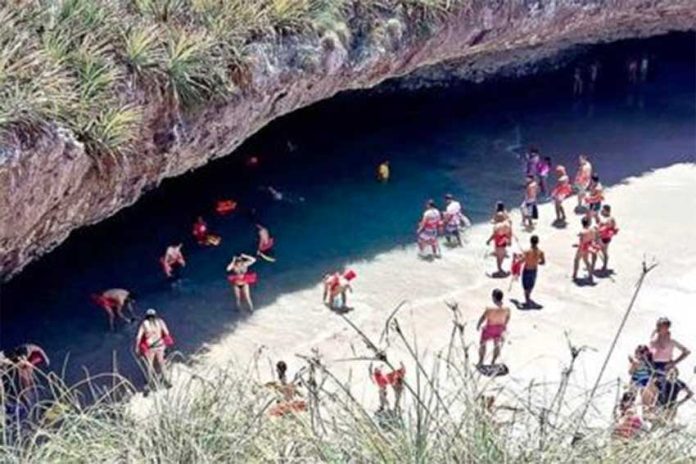A high-level federal environment official and an academic have called on government and other stakeholders to make Mexico’s tourism industry more responsible and sustainable.
Lucía Ruiz, a strategy director at the Natural Protected Areas Commission (Conanp), told the newspaper Milenio that rules need to be put in place to avoid “overcrowding” and the consequent environmental damage of popular tourist destinations.
The Marieta Islands National Park, off the coast of Nayarit, is one example of a destination where an overload of visitors triggered concerns over environmental damage.
Conanp closed the park for three months in 2016 and later limited access to 116 people per day and increased entrance costs, which Ruiz said had “the aim of avoiding the collapse of the area’s attractions.”
She added that communities that depend on tourism along with the government and visitors need to work together towards achieving “responsible tourism that allows attractions to be protected and, at the same time, for locals’ lives to improve.”
The need to better protect Mexico’s natural treasures is emphasized by a 2017 report issued by the World Bank, which ranked Mexico second for quantifiable natural resources but 116th of 136 countries for environmental sustainability.
The increasing number of international tourists coming to Mexico — making the country the sixth most visited in the world — is also placing extra strain on the environment.
Francisco Madrid Flores, director of the School of Tourism at the Anáhuac University, said the challenge Mexico faces is to make that growth sustainable.
“. . . Mexico has the possibility to do more for sustainability . . . There are real instruments in the General Tourism Law of 2009, with two explicit chapters about sustainable tourism. One has to do with tourism legislation . . . and the other is related to sustainable tourism development zones,” he said.
Madrid, who is also a former federal tourism (Sectur) official, added that federal, state and municipal authorities need to work together to establish criteria for sustainable tourism development using a model similar to that in place for archaeological zones and natural protected areas.
Doing that, he said, would be “conducive to more orderly growth” and limit the power of municipalities to grant land use authorizations that are harmful to the environment.
Madrid also said that he believed that Sectur should declare a “moratorium on the construction of [new] accommodations until housing and public services needs have been met.”
Federal Tourism Secretary Enrique de la Madrid has cited both Los Cabos in Baja California Sur and Tulum in Quintana Roo as destinations where tourism development has advanced quickly but infrastructure for local residents hasn’t kept pace.
He blamed municipal authorities for lacking long-term vision and said that federal intervention is needed.
De la Madrid also said that sustainable tourism should be based on three principles: respect for the environment, profitability and improving the lives of local residents of tourism-oriented communities.
Sectur is currently working in conjunction with the federal secretariats of Environment, Interior and Finance as well as Conanp and state and municipal governments to establish sustainable policies for all of the country’s tourism destinations.
Teresa Solís Trejo, a Sectur undersecretary, said – the aim is to establish a “legal framework” that protects the environment and promotes “programs, strategies and actions against climate change.”
She also said that strict regulation of tourism projects which guarantees sustainable development is also a priority for the federal government.
Source: Milenio (sp)
